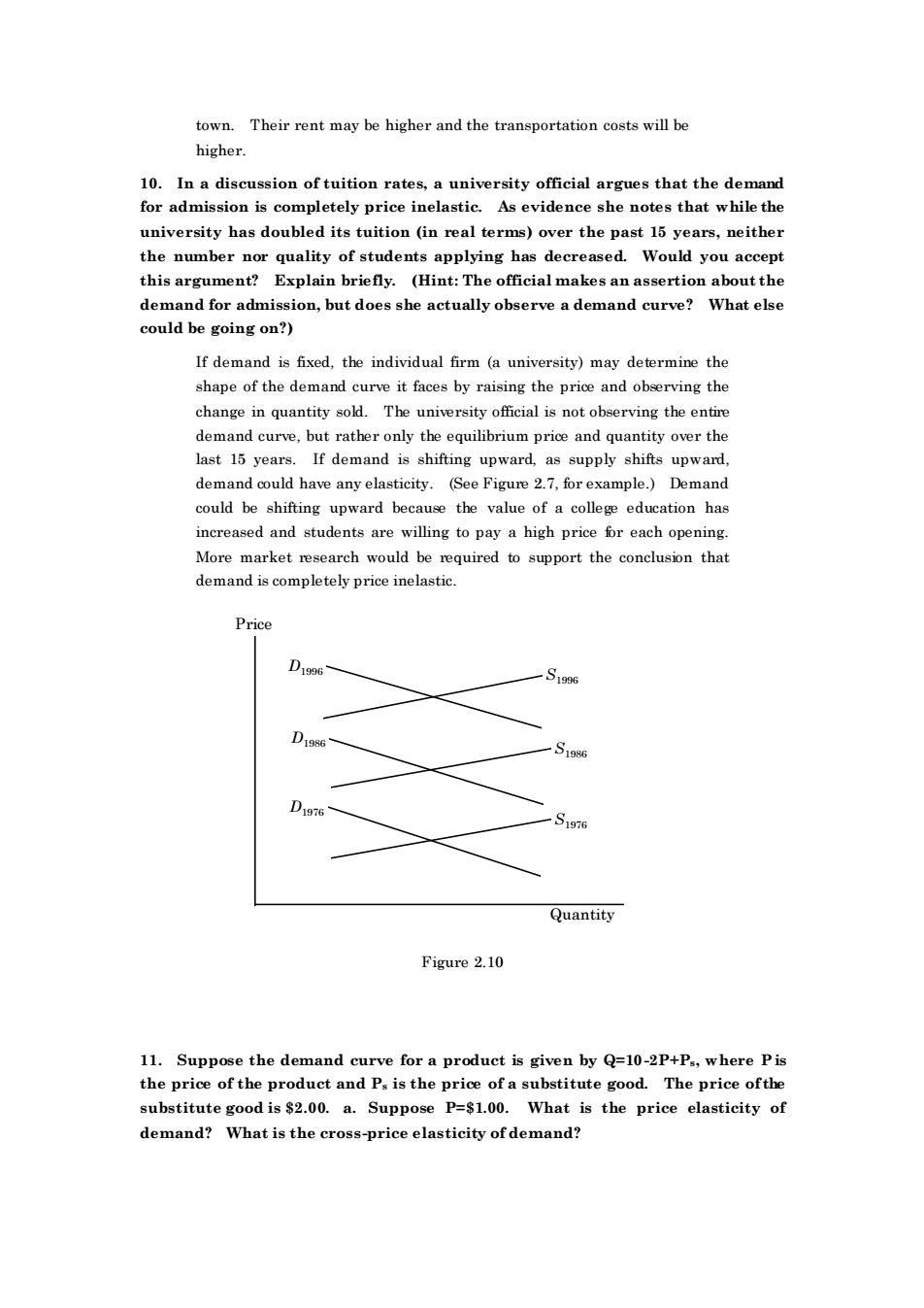正在加载图片...

town.Their rent may be higher and the transportation costs will be higher. for admission is completely price inelastic.As evidence she notes that while the university has doubled its tuition (in real terms)over the past 15 years,neither the number nor quality of students applying has decreased.Would you accept this argument?Explain briefly.(Hint:The official makes an assertion about the n,but do she eactually observe a demand curve?What else could be going on?) If demand is fixed,the individual firm (a university)may determine the shape of the demand curve it faces by raising the price and observing the change in quantity sold.The university official is not observing the entire demand curve.but rather only the equilibrium price and quantity over the last 15 years.If demand is shifting upward,as supply pward. demand oould have any elasticity.See Figure 2.7.for example)Deman could be shifting upward because the value of a college education has increased and students are willing to pay a high price for each opening. More market research would be required to support the conclusion that demand is completely price inelastic. Price S Quantity Figure2.10 11.Suppose the demand curve for a product is given by Q=10-2P+P.where Pis the price of the product and P.is the price of a substitute good.The price ofthe substitute good is S2.00.a.Suppose P=S1.00.What is the price elasticity of demand?What is the cross-price elasticity ofdemand?town. Their rent may be higher and the transportation costs will be higher. 10. In a discussion of tuition rates, a university official argues that the demand for admission is completely price inelastic. As evidence she notes that while the university has doubled its tuition (in real terms) over the past 15 years, neither the number nor quality of students applying has decreased. Would you accept this argument? Explain briefly. (Hint: The official makes an assertion about the demand for admission, but does she actually observe a demand curve? What else could be going on?) If demand is fixed, the individual firm (a university) may determine the shape of the demand curve it faces by raising the price and observing the change in quantity sold. The university official is not observing the entire demand curve, but rather only the equilibrium price and quantity over the last 15 years. If demand is shifting upward, as supply shifts upward, demand could have any elasticity. (See Figure 2.7, for example.) Demand could be shifting upward because the value of a college education has increased and students are willing to pay a high price for each opening. More market research would be required to support the conclusion that demand is completely price inelastic. S1976 Price Quantity S1986 S1996 D1996 D1986 D1976 Figure 2.10 11. Suppose the demand curve for a product is given by Q=10-2P+Ps, where P is the price of the product and Ps is the price of a substitute good. The price of the substitute good is $2.00. a. Suppose P=$1.00. What is the price elasticity of demand? What is the cross-price elasticity of demand?